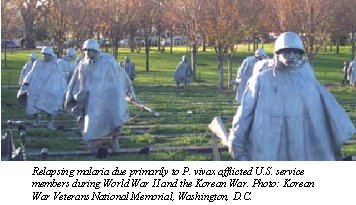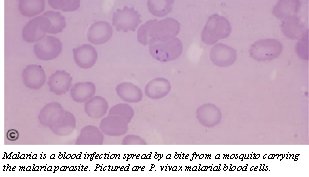
 Product Name: Primaquine
Product Name: PrimaquineCommercial Name: Primaquine Application: Anti-malarial drug for treatment and prevention of relapsing malaria Date of Licensure: January 1952 (for military use only); August 1952 (for all persons, including civilians) Type of Product: : 8 aminoquinoline oral drug Company of manufacture: : Winthorp-Stearns, Inc Reasons for development: Relapsing malaria due primarily to P. vivax afflicted U.S. service members during World War II and the Korean War. These relapses are associated with release of latent forms of parasites from the liver following P. vivax and P. ovale infections. Role of DoD:Primaquine is derived from methylene blue and is a close structural analog of pamaquine, the first synthetic antimalarial agent produced in Germany in 1926. (Pamaquine was found to be too toxic for clinical use.) Primaquine (synthesized by Dr. Robert C. Elderfield of Columbia University) was developed by the U.S. Army during World War II beginning in 1944, when malaria (some of it relapsing illness due to P. vivax) was a serious burden to U.S. troops in the Pacific theater and India-Burma theater. The 8-aminoquinoline group of antimalarials demonstrated potent activity against the liver forms of some malaria parasites. The U.S. Army did further large-scale safety and efficacy studies to develop primaquine beginning in the early 1950's when relapsing malaria due to P. vivax emerged as a major problem in returning U.S. veterans from the Korean War. Because service member compliance with chloroquine was adequate in the field, malaria did not become apparent until after cessation of chloroquine when the troops departed Korea. Dr. Alf Alving at the University of Chicago led a research team under contract to the U.S. Army which evaluated safety, toxicity, and efficacy of new antimalarial agents. Volunteers were  was found to kill liver malaria parasites caused by two types of human malaria (P. vivax and P. ovale) before these are released into the blood stream weeks to months after primary infection and therefore the drug can cure relapsing malaria. The FDA approval for primaquine as radical cure for P. vivax malaria was largely based on the need to ensure compliance (directly observed therapy every day for 14 days of the voyage from Korea to the United States was approved). Fortunately, primaquine was shown not to aggravate the problem of seasickness. At the time of FDA licensure, it was known that the dose of 15 mg/day would not be sufficient to cure all strains of P. vivax (such as the Chesson strain), but higher doses were associated with hemolytic anemia in persons of African descent.
was found to kill liver malaria parasites caused by two types of human malaria (P. vivax and P. ovale) before these are released into the blood stream weeks to months after primary infection and therefore the drug can cure relapsing malaria. The FDA approval for primaquine as radical cure for P. vivax malaria was largely based on the need to ensure compliance (directly observed therapy every day for 14 days of the voyage from Korea to the United States was approved). Fortunately, primaquine was shown not to aggravate the problem of seasickness. At the time of FDA licensure, it was known that the dose of 15 mg/day would not be sufficient to cure all strains of P. vivax (such as the Chesson strain), but higher doses were associated with hemolytic anemia in persons of African descent.Subsequently, it became known that doses of primaquine above 15 mg a day can result in anemia due to break-up of blood cells in persons with an enzyme deficiency known as glucose-6-phosphate dehydrogenase deficiency. It is therefore necessary to test for G6PD deficiency if doses larger than 15 mg of primaquine/day are used. This enzumedeficiency is most common in persons of African, Mediterranean, Middle Eastern and southeast Asian descent. The current recommendation of 30 mg/day x 14 days for treatment of P. vivax infections does not reflect emergence of primaquine-resistant P. vivax since the 1950's. In recent years a multidisciplinary working group from the Walter Reed Army Institute of Research (WRAIR) and the Naval Medical Research Insitute (NMRI) reviewed the existing data on primaquine to determine whether primaquine could be useful as a prophylactic drug. The U.S. Centers for Disease Control and Prevention now recommends primaquine as a possible chemoprophylactic agent to prevent malaria. |
| Chloroquine | Primaquine | Sulfadoxine | Mefloquine | Doxycycline | Halofantrine | Atovaquone |
